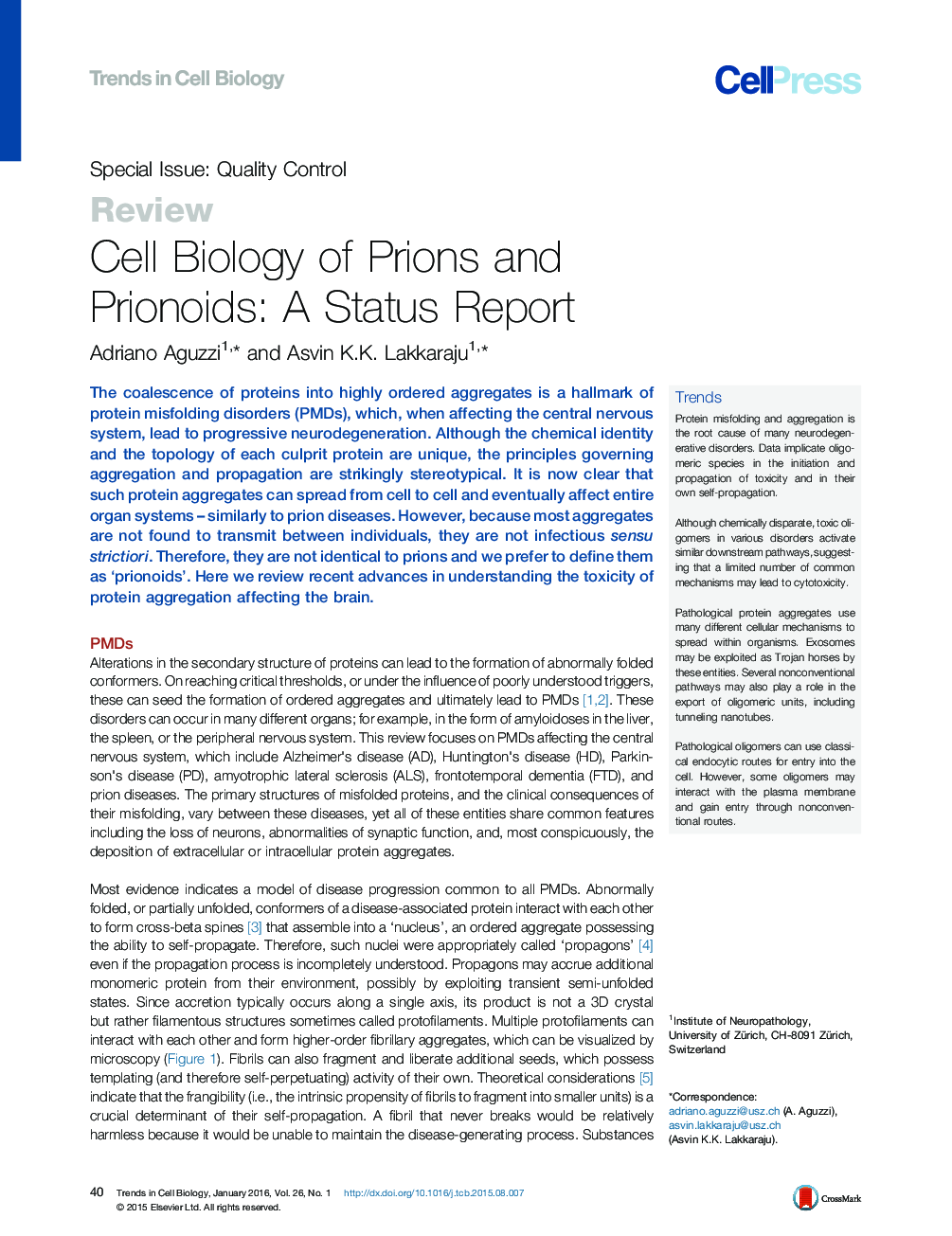| Article ID | Journal | Published Year | Pages | File Type |
|---|---|---|---|---|
| 2204328 | Trends in Cell Biology | 2016 | 12 Pages |
The coalescence of proteins into highly ordered aggregates is a hallmark of protein misfolding disorders (PMDs), which, when affecting the central nervous system, lead to progressive neurodegeneration. Although the chemical identity and the topology of each culprit protein are unique, the principles governing aggregation and propagation are strikingly stereotypical. It is now clear that such protein aggregates can spread from cell to cell and eventually affect entire organ systems – similarly to prion diseases. However, because most aggregates are not found to transmit between individuals, they are not infectious sensu strictiori. Therefore, they are not identical to prions and we prefer to define them as ‘prionoids’. Here we review recent advances in understanding the toxicity of protein aggregation affecting the brain.
TrendsProtein misfolding and aggregation is the root cause of many neurodegenerative disorders. Data implicate oligomeric species in the initiation and propagation of toxicity and in their own self-propagation.Although chemically disparate, toxic oligomers in various disorders activate similar downstream pathways, suggesting that a limited number of common mechanisms may lead to cytotoxicity.Pathological protein aggregates use many different cellular mechanisms to spread within organisms. Exosomes may be exploited as Trojan horses by these entities. Several nonconventional pathways may also play a role in the export of oligomeric units, including tunneling nanotubes.Pathological oligomers can use classical endocytic routes for entry into the cell. However, some oligomers may interact with the plasma membrane and gain entry through nonconventional routes.
